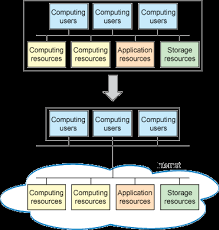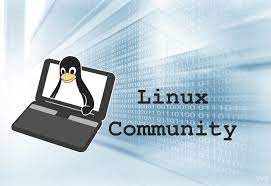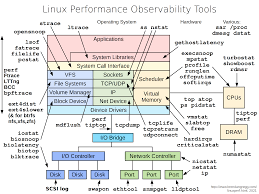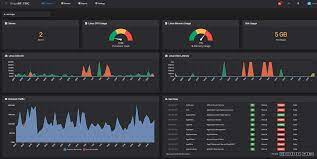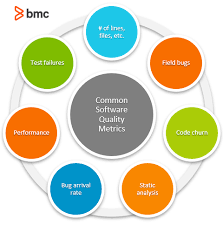Nurturing Collaboration and Empowerment: The Strength of Linux Community Support
Linux Community Support: Empowering Users, Sharing Knowledge
In the vast digital landscape of operating systems, Linux stands out as a shining example of a community-driven project. What sets it apart is not just its open-source nature but also the incredible support and camaraderie that exists within the Linux community. The Linux community support is a powerful force that empowers users, fosters collaboration, and ensures that no one is left behind.
At the heart of the Linux community is a diverse group of individuals who are passionate about technology and believe in the principles of openness and freedom. They come from all walks of life, ranging from experienced developers and system administrators to enthusiastic hobbyists and curious beginners. What unites them is their shared love for Linux and their willingness to lend a helping hand to those in need.
One of the most remarkable aspects of the Linux community support is its accessibility. Whether you are facing a technical issue, seeking advice on software choices, or simply exploring new possibilities, there are numerous avenues available for assistance. Online forums, mailing lists, chat rooms, and social media groups dedicated to Linux provide platforms for users to connect with each other.
These forums act as virtual meeting places where users can ask questions, share experiences, and seek guidance from more experienced members. The beauty of this collaborative approach lies in its inclusivity – everyone’s voice is heard and respected regardless of their level of expertise. From basic troubleshooting to complex system configurations, there is always someone ready to offer assistance or point you in the right direction.
The Linux community support goes beyond just solving technical issues; it also encourages learning and knowledge sharing. Many users take pride in sharing their expertise by creating tutorials, writing guides, or contributing to online documentation repositories. This wealth of knowledge benefits not only newcomers but also seasoned users who may stumble upon innovative solutions or discover new ways to optimize their systems.
Moreover, the spirit of collaboration extends beyond online interactions. Local Linux user groups and meetups bring Linux enthusiasts together in physical spaces, allowing for face-to-face interactions, workshops, and presentations. These gatherings foster a sense of community and provide opportunities for networking, mentorship, and even collaborative projects.
The Linux community support is not limited to users alone. Developers and software companies actively engage with the community by releasing open-source software, contributing to existing projects, or providing resources for further development. This symbiotic relationship ensures that Linux remains a vibrant ecosystem with constant innovation and improvement.
In a world where proprietary software dominates, the Linux community support serves as a beacon of empowerment. It offers users the freedom to take control of their computing experience, customize their systems to suit their needs, and learn from an ever-expanding pool of knowledge. The Linux community embodies the belief that technology should be accessible to all and that collaboration can lead to remarkable achievements.
So whether you are a seasoned Linux user seeking advanced solutions or a curious beginner taking your first steps into the world of open-source, rest assured that the Linux community support is there for you. Embrace this powerful network of like-minded individuals who are passionate about empowering others through shared knowledge. Together, let’s continue building an inclusive and supportive community that propels Linux forward into an even brighter future.
Frequently Asked Questions: Linux Community Support in the UK
- What is the best way to get help with Linux?
- Where can I find a Linux user group in my area?
- What are the most popular distributions of Linux?
- How do I install software on Linux?
- How can I learn more about using the command line in Linux?
- What resources are available for troubleshooting problems with Linux?
What is the best way to get help with Linux?
When seeking help with Linux, there are several effective avenues you can explore. Here are some of the best ways to get assistance:
- Online Forums and Communities: Joining Linux forums and online communities is a great way to connect with experienced users and experts. Websites like LinuxQuestions.org, Reddit’s r/linux community, and the Ubuntu Forums provide platforms for asking questions, sharing experiences, and seeking guidance. Make sure to search for existing threads or use the forum’s search function before posting your query to see if a similar issue has been addressed before.
- IRC (Internet Relay Chat) Channels: IRC channels dedicated to Linux offer real-time communication with a wide range of knowledgeable users who are often willing to help. Channels like #linux on Freenode or distribution-specific channels like #ubuntu or #fedora can be accessed using IRC clients such as HexChat or irssi.
- Mailing Lists: Many Linux distributions maintain mailing lists where users can subscribe and participate in discussions about specific topics or seek help from the community. These lists often have archives that can be searched for solutions to common problems.
- Official Documentation: Most Linux distributions provide comprehensive documentation that covers installation, configuration, troubleshooting, and more. Check your distribution’s official website for documentation tailored to your specific version. Reading through the official documentation can often address common issues and provide step-by-step instructions.
- Local User Groups and Meetups: Look for local Linux user groups in your area or nearby cities where enthusiasts gather to share knowledge, organize workshops, and offer support. Attending these meetups allows you to interact with fellow Linux users face-to-face, learn from their experiences, and build connections within your local community.
- Online Tutorials and Guides: Numerous online resources offer tutorials, guides, and how-to articles on various aspects of Linux usage and troubleshooting. Websites like Linux.com, Tecmint.com, and DigitalOcean’s Community tutorials provide valuable resources for users of all levels.
- Distribution-specific Support Channels: Each Linux distribution typically has its own support channels, including official forums, chat rooms, and dedicated support websites. For example, Ubuntu has the Ask Ubuntu platform and Fedora has the Fedora Project website. Check your distribution’s official channels for specific support options.
Remember to be patient, polite, and provide as much relevant information as possible when seeking help. Clearly describe your issue, mention the Linux distribution and version you are using, list any error messages you encountered, and explain what troubleshooting steps you have already taken. This will help others understand your problem better and provide more accurate assistance.
By utilizing these various sources of Linux support, you can tap into the vast knowledge and expertise of the Linux community to resolve issues, gain insights, and enhance your overall Linux experience.
Where can I find a Linux user group in my area?
Finding a Linux user group in your area is a great way to connect with like-minded individuals and tap into the local Linux community. Here are a few resources that can help you locate a Linux user group near you:
- Meetup.com: Meetup is a popular platform for finding local groups and events. Visit meetup.com and search for keywords like “Linux,” “Open Source,” or “FOSS (Free and Open Source Software)” along with your location. You can also filter the search results by distance, date, and other criteria to find the most relevant groups.
- Linux User Groups (LUG) Directory: The Linux User Groups (LUG) directory is an extensive listing of user groups worldwide. Visit lug.org.uk (for the UK) or lug.org (for other countries) to explore their directory and find user groups in your area.
- Local Universities or Colleges: Many educational institutions have Linux user groups associated with their computer science or engineering departments. Check if your local university or college has any active Linux user groups that welcome community members.
- Online Forums and Mailing Lists: Engaging with online forums, mailing lists, or discussion boards focused on Linux can help you connect with local users who may be part of a nearby user group. Participate in discussions, ask questions, and inquire about local meetups or user group activities.
- Social Media Platforms: Utilize social media platforms like Facebook, Twitter, or LinkedIn to search for Linux user groups in your area or join relevant communities dedicated to open-source software.
- Local Tech Events: Keep an eye out for technology-related conferences, hackathons, workshops, or seminars happening in your city or region. These events often attract Linux enthusiasts and may have dedicated sessions or networking opportunities for users to connect.
Remember that the availability of active user groups may vary depending on your location and the size of the community. If you cannot find a local Linux user group, consider starting one yourself. Reach out to other Linux enthusiasts in your area through the aforementioned channels and gauge interest in forming a new group.
Joining a Linux user group can be an enriching experience, providing opportunities to learn, collaborate, and expand your network. So don’t hesitate to explore these resources and dive into the vibrant world of your local Linux community.
What are the most popular distributions of Linux?
Linux, being an open-source operating system, offers a wide range of distributions tailored to different user needs and preferences. While popularity can vary over time and across different user communities, here are some of the most well-known and widely used Linux distributions:
- Ubuntu: Ubuntu is one of the most popular Linux distributions known for its user-friendly interface and focus on ease of use. It is based on Debian and offers a stable and reliable platform suitable for both desktop and server environments.
- Fedora: Developed by the Fedora Project, Fedora is a community-driven distribution that emphasizes cutting-edge features, frequent updates, and support for emerging technologies. It serves as a testing ground for Red Hat Enterprise Linux (RHEL) development.
- Debian: Debian is one of the oldest Linux distributions with a strong emphasis on stability, security, and free software principles. It has a large community of contributors who work together to create a robust operating system suitable for various purposes.
- CentOS: CentOS (Community Enterprise Operating System) is derived from the source code of RHEL but maintained by the community rather than Red Hat itself. It aims to provide a stable and reliable platform primarily focused on server deployments.
- Arch Linux: Arch Linux is a lightweight and highly customizable distribution that follows a “do-it-yourself” philosophy. It provides users with full control over their system’s configuration while offering access to bleeding-edge software packages through its rolling release model.
- openSUSE: openSUSE is known for its flexibility and versatility, offering both stable releases suitable for everyday use (Leap) as well as cutting-edge versions (Tumbleweed) that provide access to the latest software updates.
- Mint: Linux Mint focuses on providing an intuitive and elegant desktop environment based on Ubuntu or Debian repositories. It aims to offer an out-of-the-box experience with multimedia codecs, proprietary drivers, and user-friendly tools.
- Elementary OS: Elementary OS is designed with a focus on simplicity, elegance, and a consistent user experience. It draws inspiration from macOS and offers a visually appealing desktop environment.
It’s important to note that this list represents only a fraction of the numerous Linux distributions available. Each distribution caters to specific user preferences, such as stability, customizability, user-friendliness, or specialized use cases like penetration testing (Kali Linux) or multimedia production (Ubuntu Studio). The beauty of Linux lies in its diversity, allowing users to choose the distribution that best suits their needs.
How do I install software on Linux?
Installing software on Linux is a straightforward process that can be done through package managers or by manually downloading and installing software from trusted sources. Here are two common methods for installing software on Linux:
Package Manager:
Most Linux distributions come with a package manager, which is a tool that simplifies the installation and management of software packages. Package managers handle dependencies, ensure compatibility, and provide easy updates. The specific package manager varies depending on the distribution, but some popular ones include:
– Debian/Ubuntu-based distributions: APT (Advanced Package Tool) is used with commands like `apt-get` or `apt`.
– Fedora/RHEL-based distributions: DNF (Dandified Yum) or YUM (Yellowdog Updater Modified) are used with commands like `dnf` or `yum`.
– Arch-based distributions: Pacman is used with commands like `pacman`.
To install software using a package manager, open the terminal and use the appropriate command for your distribution followed by the name of the package you want to install.
For example, to install the popular text editor “Vim” on Ubuntu, you would run:
“`
sudo apt-get install vim
“`
Manual Installation:
Sometimes, you may need to install software that is not available in your distribution’s repositories or requires manual installation. In such cases, you can download the software from its official website or trusted sources.
Here’s a general guide for manually installing software:
Download the software package from a trusted source.
Extract the contents if it’s an archive file (e.g., .tar.gz).
Read any accompanying documentation or README files for specific installation instructions.
Open a terminal and navigate to the extracted folder using the `cd` command.
Run any necessary configuration scripts using commands like `./configure`.
Compile the source code if needed using commands like `make`.
Install the software using commands like `sudo make install`.
It’s important to note that when installing software manually, you are responsible for managing dependencies and updates yourself.
Remember to always download software from trusted sources to ensure your system’s security. Additionally, keeping your system up-to-date with regular updates is crucial for maintaining stability and security.
Linux offers a vast array of software choices, and with these installation methods, you can easily explore and install the applications that best suit your needs.
How can I learn more about using the command line in Linux?
Learning the command line in Linux can be a valuable skill that opens up a world of possibilities for system administration, automation, and efficient workflow. Here are some steps you can take to learn more about using the command line:
- Start with the basics: Familiarize yourself with fundamental concepts such as navigating the file system, listing directory contents, creating and deleting files and directories, and moving or copying files. Learn basic commands like cd, ls, mkdir, rm, cp, and mv.
- Online tutorials and resources: There are plenty of online tutorials and resources available to help you learn the command line. Websites like Linux Journey, The Linux Command Line by William Shotts, and Linuxize provide comprehensive guides for beginners. These resources cover various topics and provide practical examples to reinforce your understanding.
- Practice on a virtual machine: Set up a virtual machine using software like VirtualBox or VMware Player to experiment with Linux without affecting your main operating system. Install a popular Linux distribution such as Ubuntu or Fedora and use it as a sandbox environment to practice your command line skills.
- Take an online course: Consider enrolling in an online course specifically focused on learning the command line in Linux. Platforms like Udemy, Coursera, and edX offer courses taught by industry professionals that cover everything from basic commands to advanced scripting.
- Join forums and communities: Engage with the Linux community by joining forums or discussion boards dedicated to Linux enthusiasts. Websites like Stack Exchange (Unix & Linux section) or Reddit’s r/linux subreddit provide platforms where you can ask questions, seek guidance, and learn from experienced users.
- Use man pages: The manual pages (man pages) in Linux provide detailed documentation for every command available on your system. Open a terminal window and type “man
” (without quotes) to access comprehensive information about that specific command’s usage, options, and examples. - Practice regularly: The more you use the command line, the more comfortable you’ll become. Challenge yourself by attempting different tasks solely through the command line, such as file manipulation, text editing, and system administration tasks. Practice helps solidify your knowledge and improves your efficiency.
- Explore scripting: Once you are comfortable with basic commands, delve into shell scripting. Bash (Bourne Again SHell) is the default shell in most Linux distributions. Learning scripting allows you to automate repetitive tasks and create more complex command sequences.
Remember that learning the command line is an ongoing process. Be patient with yourself and embrace a hands-on approach to gain confidence and proficiency. With time and practice, you’ll become adept at using the command line in Linux and unlock its full potential.
What resources are available for troubleshooting problems with Linux?
When facing issues with Linux, there are several resources available to assist in troubleshooting and resolving problems. Here are some valuable resources you can turn to:
- Online Forums: Linux has a vibrant online community where users gather to discuss and troubleshoot various issues. Popular forums like LinuxQuestions.org, Ubuntu Forums, and Stack Exchange’s Unix & Linux section offer dedicated spaces for users to seek help, ask questions, and find solutions.
- Mailing Lists: Many Linux distributions maintain mailing lists where users can subscribe and participate in discussions related to specific topics or distributions. These mailing lists provide a platform for users to seek assistance from experienced community members.
- Official Documentation: Most Linux distributions have comprehensive documentation available on their official websites. These documentation resources often include troubleshooting guides, FAQs, and step-by-step instructions for resolving common issues.
- Wiki Pages: Community-driven wikis like the ArchWiki or the Ubuntu Wiki contain extensive information on various aspects of Linux, including troubleshooting tips and solutions for specific problems. These wikis are continuously updated by the community, making them valuable resources for finding solutions.
- IRC Channels: Internet Relay Chat (IRC) channels dedicated to specific distributions or aspects of Linux can be excellent sources of real-time assistance. Users can join these chat rooms using IRC clients and interact with knowledgeable individuals who may be able to help troubleshoot problems.
- Online Tutorials and Blogs: Many experienced Linux users share their knowledge through tutorials and blog posts on personal websites or platforms like Medium or Dev.to. These resources often provide step-by-step instructions or detailed explanations of how to resolve specific issues.
- Vendor/Community Support Forums: If you are using a distribution that is backed by a company or has an active community support forum, such as Red Hat’s Customer Portal or the Fedora Community Forum, these platforms can be valuable sources of support specifically tailored to that distribution.
- Social Media Groups: Various social media platforms, including Facebook, Reddit, and LinkedIn, host Linux-focused groups where users can seek help and share their experiences. These groups often have active members who are willing to provide assistance and guidance.
Remember, when seeking support from these resources, it is essential to provide clear and detailed information about the problem you are facing. Include relevant error messages, system specifications, and steps you have already taken to troubleshoot the issue. This will help others in the community better understand your problem and provide more accurate solutions.
By utilizing these resources, you can tap into the collective knowledge of the Linux community and find solutions to your Linux-related problems.




